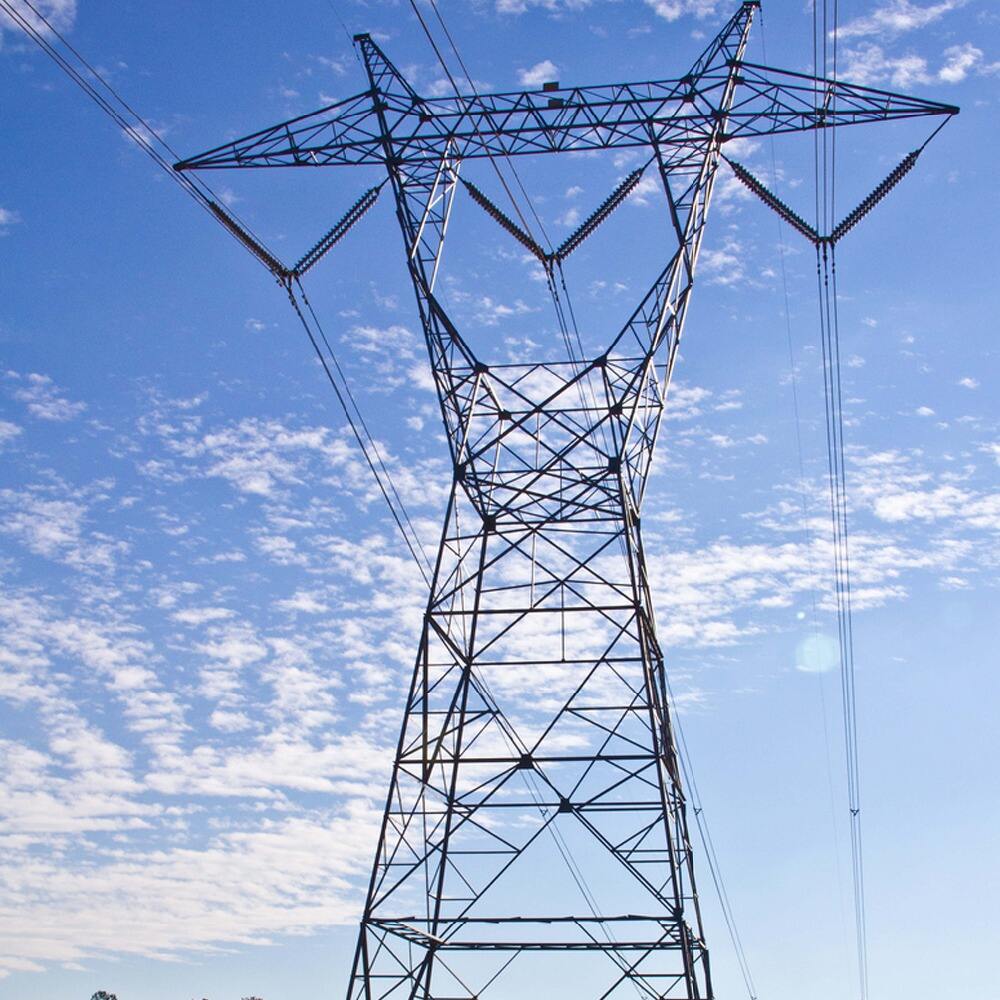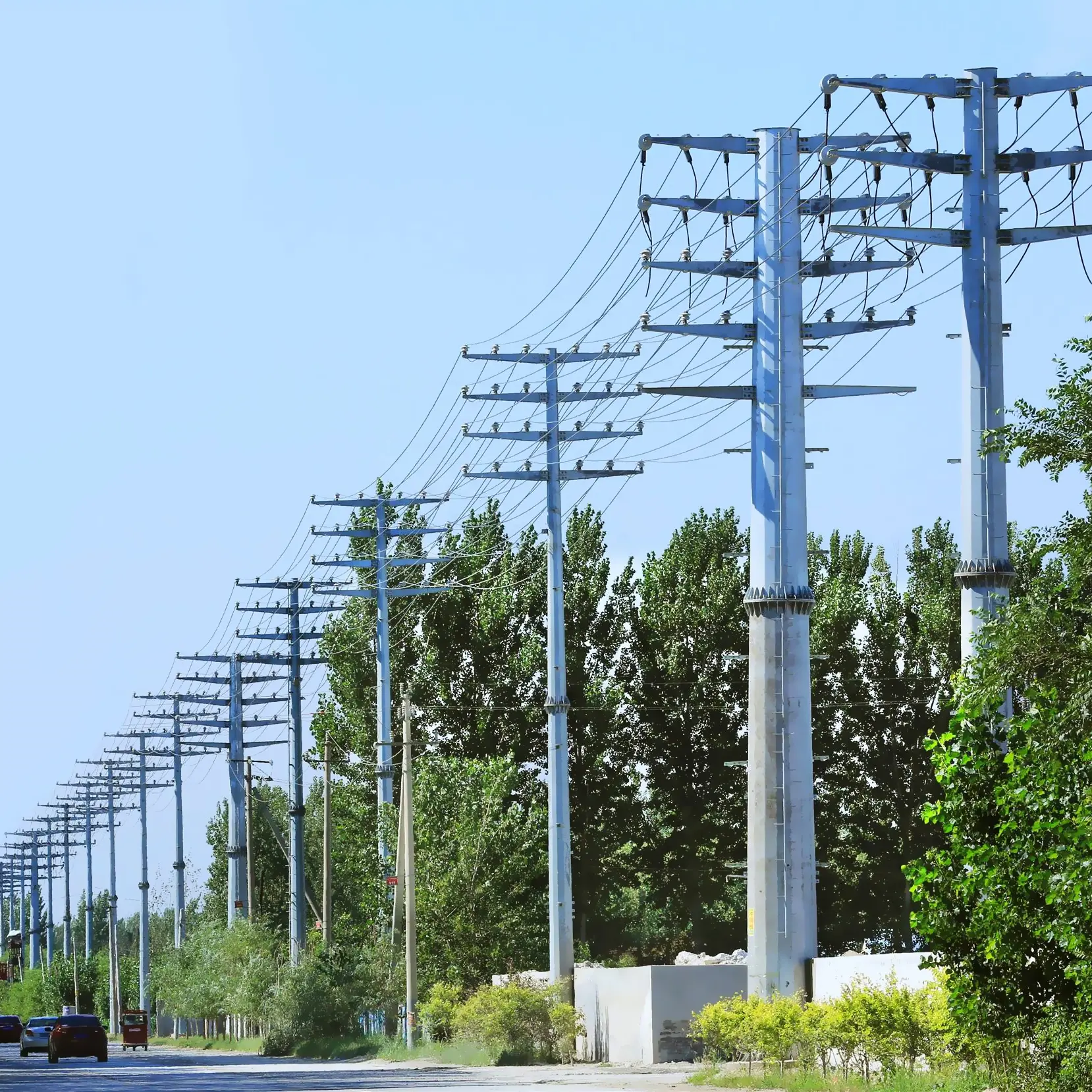Key Features of Efficient Transmission Line Towers
Keeping transmission line towers structurally sound is really important for making sure our power grids stay reliable and safe for years to come. Good quality towers do more than just carry electricity across the country though. They actually cut down on how often things break down and save money on repairs in the long run. Research shows that when towers aren't built properly, problems happen much more frequently. This means blackouts become commonplace and fixing them costs a lot more cash. That's why regular checkups matter so much. Maintenance crews need to look at these structures regularly so they can spot small cracks or weaknesses before something big goes wrong. After all, nobody wants their neighborhood plunged into darkness because someone missed a tiny problem months ago.
The ability to flex designs when building transmission line towers matters just as much because these structures need to handle all sorts of voltage levels while dealing with whatever geography they're placed on. Take multi circuit towers for instance. These bad boys can carry several high voltage lines along one stretch of land which makes perfect sense in crowded cities where every inch counts. The versatility really shines through when looking at how well these towers work across different landscapes. We've seen this play out in actual projects too, like the SunZia initiative stretching between New Mexico and Arizona. Those towers aren't just sitting there looking pretty either they actually get the job done day after day despite whatever challenges come their way.
What kind of material we pick makes all the difference when it comes to how long transmission line towers will last. Three main things matter most: how well they resist rust, how heavy they are, and just plain old staying power. Materials that don't corrode easily definitely help towers stick around longer, especially where conditions get tough out there in the field. Take a look at what actual manufacturers report - galvanized steel and weathering steel tend to hang in there much better than other options according to their tests. These materials cut down on the need for constant repairs over time, which saves money and headaches for utility companies dealing with maintenance crews and replacement costs.
How well transmission line towers adjust to their environment matters a lot for their effectiveness. These structures face all sorts of harsh conditions from Mother Nature, including earthquakes and storms that could disrupt electricity flow. Recent research shows we're seeing more frequent and stronger weather events across many regions, which makes building tough designs even more important than before. Some smart adaptations help out here too. Flexible bases for towers and special shock absorption systems reduce damage from severe weather impacts. This protection isn't just good for keeping power lines intact it also helps protect nearby communities from potential hazards during bad weather outbreaks.
Top 10 Transmission Line Towers for Maximum Efficiency
Choosing the right transmission line tower can significantly influence the efficiency and reliability of power transmission systems. Below are some of the best options available, each with unique advantages:
Lattice Tower: These towers are ideal for high voltage situations, often found in densely populated urban areas where space is limited. Their structural design allows them to support significant power loads efficiently, as demonstrated in numerous case studies.

Monopole Tower: Known for their space-saving benefits, monopole towers are cost-effective and require less time for installation compared to traditional counterparts. Projects such as the HVDC link installations in cyclone-prone regions highlight their effectiveness, showcasing reduced project timelines and overall cost savings.
Double-Circuit Towers: By facilitating two circuits per tower, double-circuit towers maximize power transfer while minimizing land use. Statistics from recent energy distribution projects demonstrate these towers' ability to enhance energy efficiency and reduce the spatial footprint in dense regions.
Multi-Circuit Towers: These are designed for high-capacity projects, especially useful in coastal areas with integrated circuits. Their ability to efficiently manage multiple lines within a compact space alleviates the requirement for additional land, thereby maximizing cost and space efficiency.
Guyed Towers: Engineered to endure challenging terrains, guyed towers provide essential support to infrastructure in hilly regions. Adhering to stringent engineering standards, they are often chosen for projects in both remote and rugged landscapes.
Compact Guyed Towers: Versatile and cost-efficient, compact guyed towers suit urban settings where space constraints are prominent. Case studies from urban deployments underscore their adaptability and economic benefits within restricted environments.
Hybrid Towers: By combining various materials, hybrid towers offer enhanced strength and flexibility. Market data indicates superior structural performance, making them suitable for varied applications requiring a blend of robustness and versatility.
Advanced Composite Towers: Crafted from lightweight yet durable materials, advanced composite towers stand out for their strength. Experimental results affirm their resilience, especially in remote locations where lightweight materials become advantageous for transportation and erection.
Smart Towers: Merging modern technology with traditional designs, smart towers facilitate real-time monitoring and maintenance. Initiatives by utilities embracing smart grids illustrate how these towers contribute to proactive maintenance strategies, optimizing performance metrics.
Future-Ready Towers: These towers prioritize sustainability and efficiency, adapting to emerging industry trends. According to industry reports, future-ready designs incorporate innovative materials and technologies to meet evolving energy demands while reducing environmental impact.
These transmission towers represent the pinnacle of current engineering and technological advancements in the transmission sector, each serving unique needs and conditions to enhance electricity distribution infrastructure.
Applications of Efficient Transmission Line Towers
Transmission line towers are essential components of urban infrastructure that make smart cities possible. They form the foundation of power distribution systems in crowded metropolitan areas where people need consistent electricity for their daily lives. Take a look at any major smart city initiative around the world, and chances are they're using upgraded transmission towers to connect different parts of the city grid. These structures aren't just about carrying power cables anymore; they've become critical nodes in managing energy flow through increasingly complex urban environments as populations grow and technology demands evolve.
Transmission towers that work efficiently really speed things up when it comes to getting renewable energy sources connected to our current power grids. These towers provide solid backing for both solar panels and wind turbines, making the switch to cleaner power much easier than before. Looking at what's happening across different regions shows how this works in practice. For instance, some places have installed advanced transmission infrastructure recently, which means electricity gets distributed better throughout communities while people rely less on coal and gas plants for their daily needs.
These towers do more than just carry electricity across the country. Many now serve as supports for cell phone signals too. The latest developments mean power lines can host telecom equipment right alongside them, which helps boost internet speeds and makes communications better overall. Having both functions in one structure cuts down on the need for building completely separate networks for electricity and phones. This saves money for companies while still getting the job done. We're seeing this happen all over places where space is limited or budgets are tight, making it a smart solution for modern infrastructure needs.
Factors to Consider When Choosing a Transmission Line Tower
Picking the right transmission line tower means paying close attention to how much weight it can actually hold up. If a tower can't handle the load it's supposed to carry, the whole power grid becomes unstable and dangerous. Most engineers follow certain building codes when designing these structures because they know what works from past experience. The importance really hits home in places where storms are common. A single failed tower during bad weather isn't just an inconvenience it can knock out electricity for thousands of homes until someone spends time and money fixing the damage.
Environmental assessments tend to be a must-have item on most construction projects, as various government agencies typically require them before breaking ground. Looking at how much of an ecological footprint the tower will leave behind helps prevent serious damage to nearby habitats and wildlife. Getting those green certification badges incorporated into the project makes sure everyone follows proper eco-friendly procedures during development. Green certifications do more than just look good on paper they actually show stakeholders that the company cares about environmental responsibility while fitting into broader movements aimed at cutting down emissions from big building projects across the world.
Looking at cost effectiveness during design and installation stages matters a lot actually. Sure, the price tag looks big at first glance, but going for designs that save money down the road pays off in the end. Take tower construction as an example real quick. Research across different industries consistently points out that towers built with easy installation features and low maintenance requirements end up saving companies thousands throughout their service life. When we run the numbers on costs, what we find is pretty interesting. Advanced designs typically require bigger initial spending, no doubt about it. However, these same designs cut down on ongoing expenses so much that they end up being cheaper overall in the long run. That's why so many project managers now prioritize these kinds of solutions despite the higher starting costs.
Future Trends in Transmission Line Tower Design
Design of transmission line towers has changed quite a bit lately, with many companies now focusing on sustainable options and environmentally friendly materials. Market studies show growing interest in green building methods across the sector, something we see happening worldwide as companies try to cut down their carbon footprint. Energy efficiency improvements have become a top priority too, with several new tech developments aimed at making these power lines work better. Some forward thinking engineering firms are already implementing creative approaches that actually boost both reliability and how well electricity gets distributed through the grid. We're definitely seeing a move toward cleaner, smarter infrastructure, and this shift will likely continue shaping how transmission towers look and function in the coming decades.
FAQ
What are the key features of efficient transmission line towers?
Key features include structural integrity, design flexibility, choice of materials, and environmental adaptability to ensure reliable and efficient power distribution.
How do transmission line towers support renewable energy integration?
Transmission line towers support renewable energy integration by providing robust support structures for solar and wind projects, facilitating a smooth transition to sustainable power generation.
What factors should be considered when choosing a transmission line tower?
Important factors include load-bearing capacity, environmental impact assessments, adherence to standards, and cost-effectiveness in design and installation.
What are future trends in transmission line tower design?
Future trends focus on sustainability, the use of eco-friendly materials, advancements in energy efficiency, and the integration of innovative engineering solutions.

